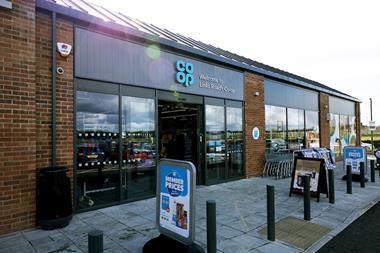Inflation and weak consumer spending made trading difficult for everyone in 2012. Yet the big supermarkets and their suppliers fared very differently.
Sainsbury’s was the only listed supermarket to enjoy share price growth, climbing 20% to 354p [52 w/e 18 December 2012]. After a shock profit warning in January, Tesco shares fell 28%, and were still 11% down at 340p at the year-end. And it was an even worse year for Morrisons, with shares showing no signs of recovering, and down 16% to 265p y-o-y.
Contrast this with the FTSE Food Producers and Processors Index, which gained almost 18%, ending the year close to 6,500 points. And the FTSE Beverages Index has done even better, growing by 33% to 13,230 points. Both sectors outperformed the 13% growth in the FTSE All-Share.
So what’s behind the contrasting performances? Who have been the star performers? And who can we expect to come out on top in 2013?
Few would have bet on one of the biggest risers of 2012: Premier Foods. Its shares almost doubled to 107p after a series of disposals, including the sale of Branston to Mizkan and various spreads brands to Hain Celestial, improved the look of its balance sheet.
Other big winners include Greencore, whose shares rose 55% over the past year to 101p thanks to significant progress integrating Uniq and smaller US acquisitions, plus good underlying growth. And shares in industry giant Associated British Foods were up over 40% to £15.58 thanks to a bumper sugar harvest and the continued success of budget clothing retailer Primark.
Among the smaller players, stevia supplier Pure Circle was the pick of the year. Its shares jumped from 90p a year ago to 241p today, even though it is still some way from making a profit. Investors ploughed in cash after EU regulatory approval was given at the end of 2011 and were further encouraged by the growing popularity of the sweetener in Europe.
Each successful supplier has a different story. But manufacturers appear more battle hardened, says Simon Peacock, director of Catalyst Corporate Finance. “They’ve cut costs, re-engineered product, worked hard on procurement and been decisive on acquisitions and sell-offs”, he adds.
And though weak consumer spending and commodity cost volatility are problems shared with retailers, the supermarkets have additional headaches. Quite apart from struggling with non-food, the growing importance of less profitable channels - online and convenience - have put pressure on margins, while smaller rivals, especially the discounters, are stealing market share.
The poor sales performance of the big four also hits their buying power. The industry portrait of powerful supermarkets bullying and dictating terms to a disparate and weak supplier base no longer rings true, says Investec analyst Dave McCarthy.
“The pendulum has swung back to suppliers because the big retailers are not delivering growth. Suppliers reward growth, and if they’re not getting it, why give better terms?”
“You can’t even invest in the winners because the growth is coming from the unquoted sector,” McCarthy adds.
Other analysts are more optimistic. Shore Capital analyst Clive Black has Tesco as his top pick for 2013 and Panmure analyst Philip Dorgan believes a slowdown in space growth and a refocus on online sales will deliver results.
“There are signs fundamental change is happening and if current management don’t do it, the next lot will. We are buyers of Sainsbury’s and Tesco, because we think change will drive higher valuations,” Dorgan said in a recent investor note.
For suppliers, after a year of strong share price appreciation, there is perhaps limited scope for more big gains in 2013.
“A lot of UK-focused [manufacturers] are looking fairly valued without that much scope to grow,” says Panmure analyst Damian McNeela, who had to look as far as Africa for his top share pick, Zambeef.
Another one to watch in 2013 will be Barr Britvic soft drinks. News of the merger gave shares in both AG Barr and Britvic a big boost in 2012. The opportunity to make a fast buck from the deal is perhaps past, but there is long-term potential, says Vasu Majumdar, a beverage specialist at Grant Thornton.
“The company’s primary activity in 2013 will inevitably be concerned with merging the two businesses and consolidating their distribution networks,” says Majumdar.
At the moment, it’s the unfashionable retailers who look to offer the most upside. But with storm clouds still hanging over the economy and so many unresolved challenges, it would take a brave soul to invest.
Top tips from analysts for 2013
Tesco
We wait to see if UK market share and margins stabilise in tandem. If so, a new strategy should emerge, focused on sweating existing assets harder, driving online and generating prodigious cashflow. Clive Black, Shore Capital
Zambeef
One of the largest agri-businesses in Zambia, operating a vertically integrated ‘farm to fork’ model. Damian McNeela, Panmure Gordon
Booker
Food retailers face another turbulent year but with world class management, clear strategy, strong financial resources, and weak competitors, Booker stays well positioned. Dave McCarthy, Investec
Greencore
Management have a clear strategy and can benefit from structural growth in the core ‘Food to Go’ category. The shares are cheap and offer an attractive dividend yield. Patrick Coffey, Liberum Capital
See also: Retailers look to fight back as tough trading continues
Retailers look to fight back as tough trading continues
- 1
 Currently reading
Currently readingRetailers look to fight back as tough trading continues
- 2




















No comments yet